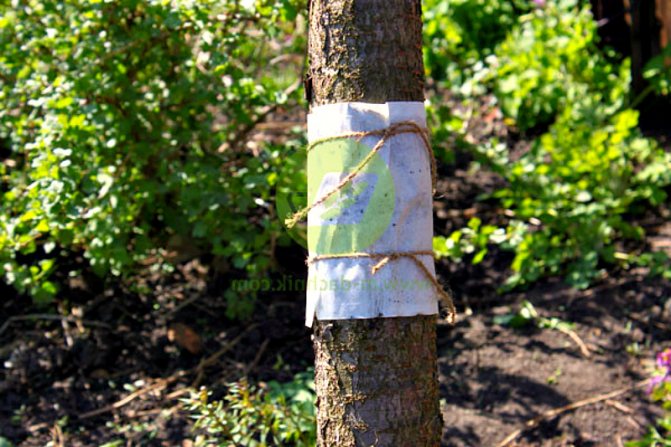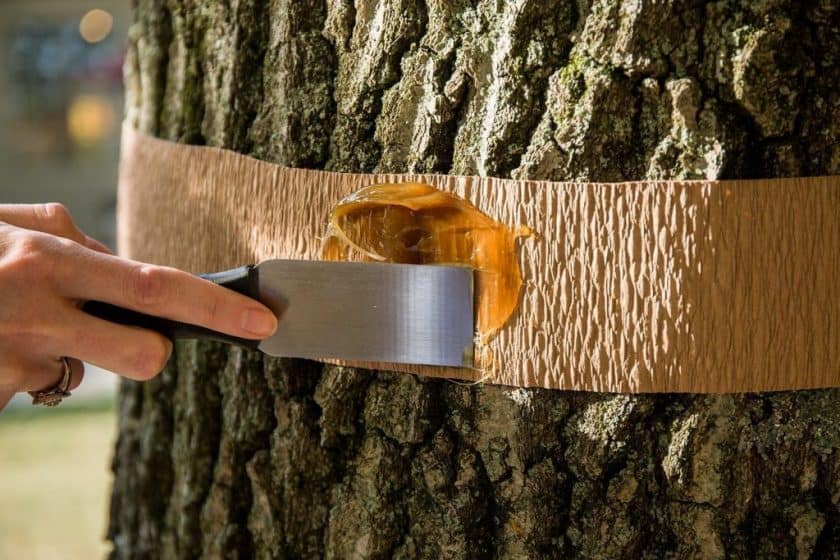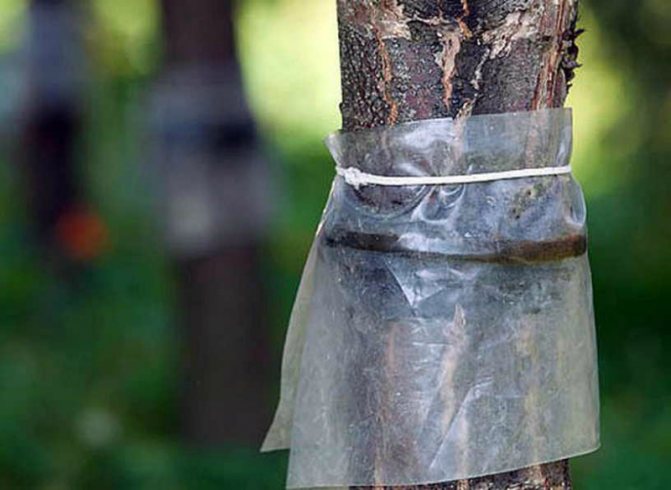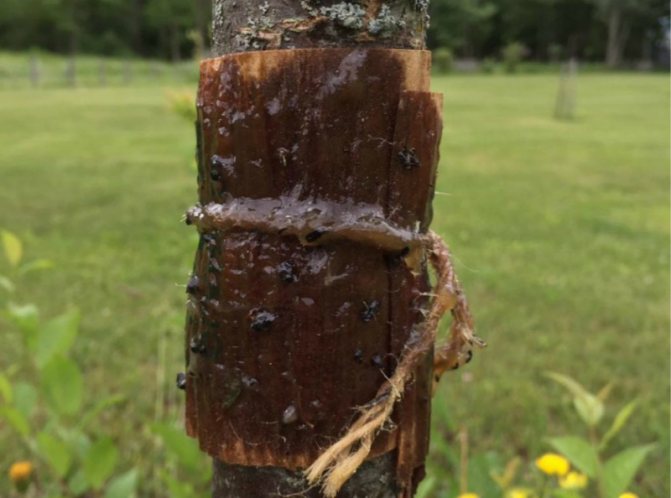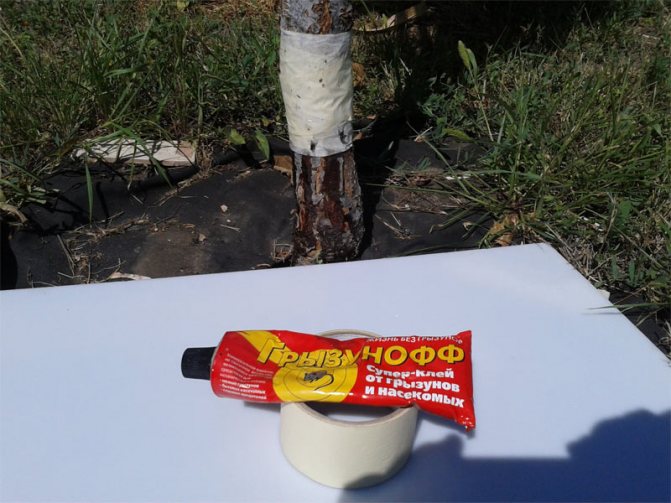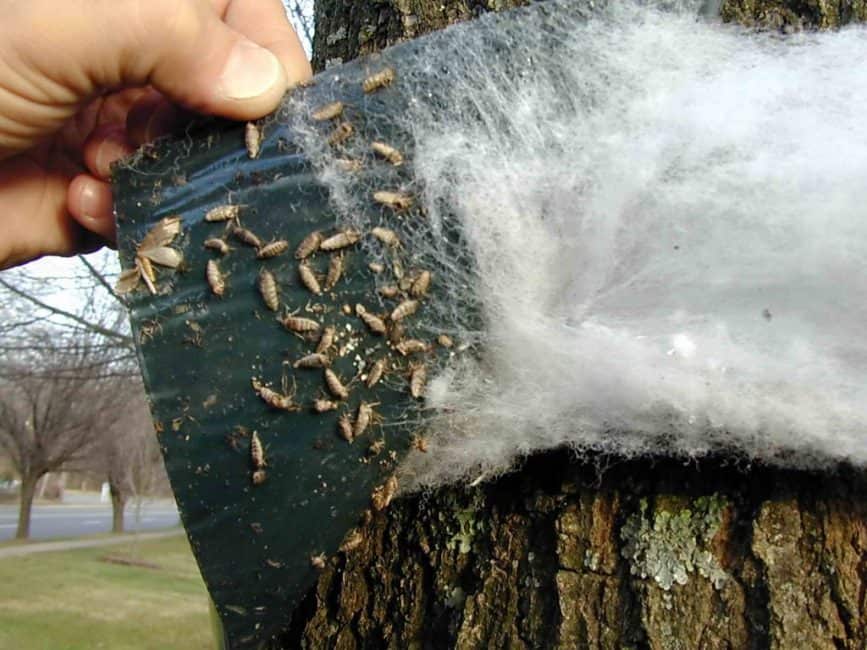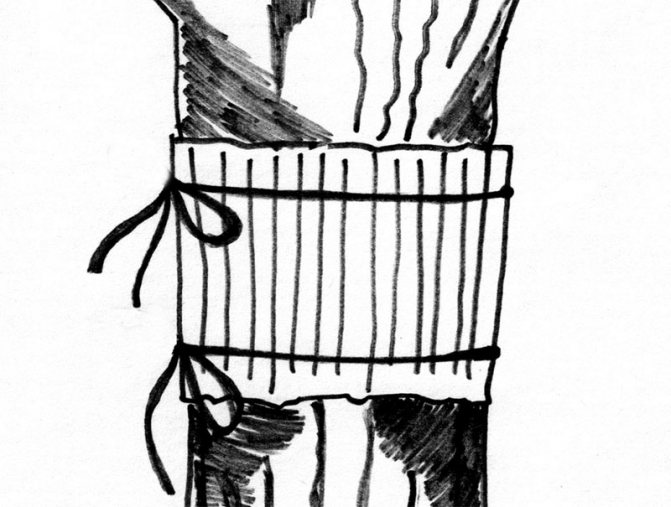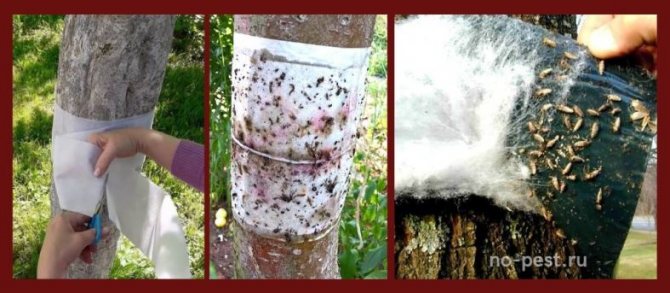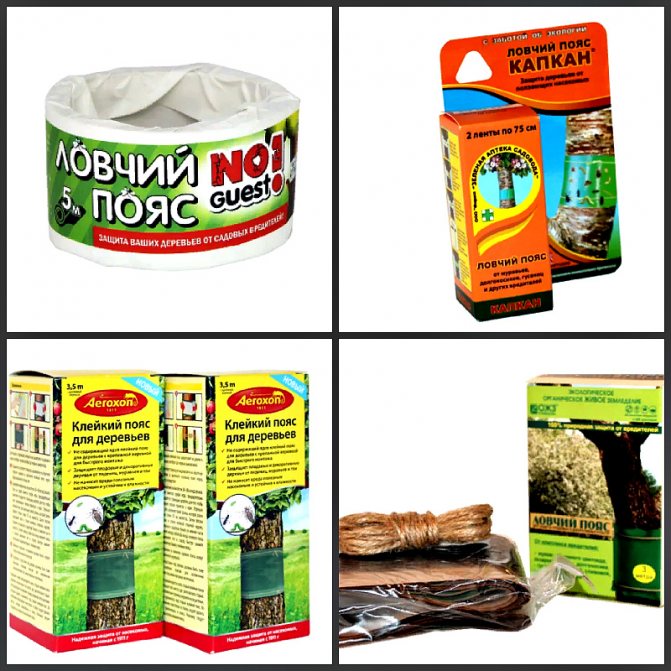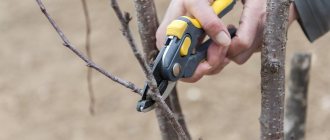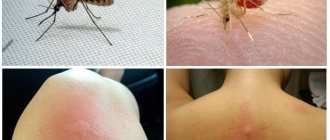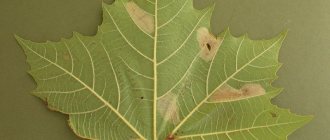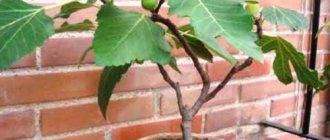As a rule, spring concerns for gardeners begin even before the onset of spring. Planning of garden maintenance works, new plantings in the beds, selection of varieties and purchase of seeds. And, of course, taking care of the health of the garden and protecting it from pests and diseases. And one of the most effective ways to protect a tree from pests hibernating in the soil is a trapping belt. We will analyze how to make it yourself and install it correctly in this article.
Catching belts are a very effective way of "catching" harmful insects and their larvae. Which can be used all season long.
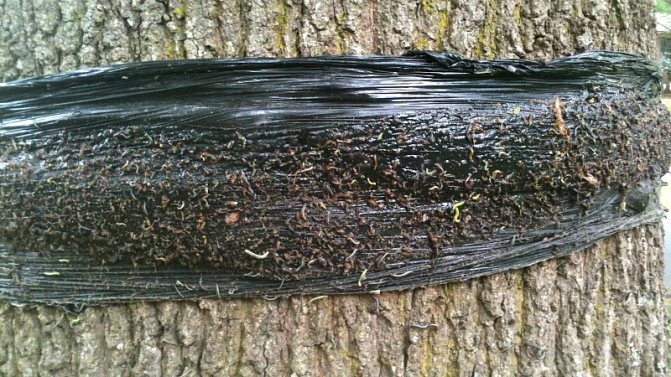
What is a trapping belt and its purpose
To protect garden trees, including ornamental, the mechanical method of stopping insects has been used for a long time. The most common and effective is considered to be the installation of a trapping belt, a means that protects the plant from ants, caterpillars, and other insects moving along the tree trunk. The effectiveness of protection against pests by such a passive method has been proven in practice - many types of garden pests make a long way from the crown of a tree along the trunk to the grass cover for reproduction, and after the appearance of a new generation, insects move back in search of food.
This flow can only be stopped by a trap tightly attached to the trunk - a trapping belt. This simple device made of paper, polyethylene or natural materials effectively fights against such types of pests:
- Weevils;
- Ticks;
- Whiteflies;
- Different types of flower beetles;
- Aphids;
- Caterpillars.
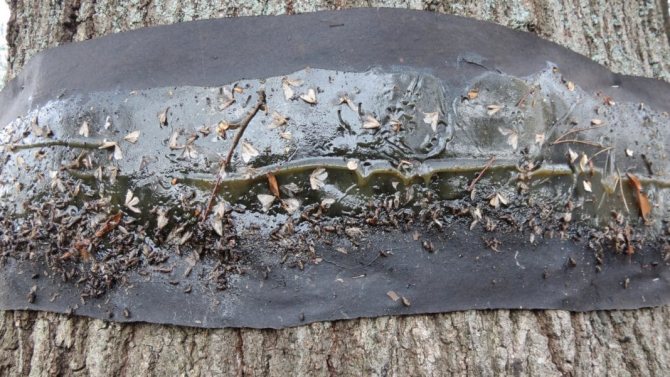

What a tree trapping belt looks like
The trapping belt for trees has several advantages compared to other types of garden pest control - it can be made by yourself, in use it is safe for humans, trees and animals, the trap is very effective. Another positive aspect of this type of struggle is that trapping belts for fruit trees with your own hands can be made from scrap materials, and it will not be necessary to use expensive drugs or complex devices.
Why do you need a belt
Not all bugs can be protected with a belt. But the list of those with the invasion of which he is able to cope is long. For example, the tracks will not go to the target, because it will be difficult for them to get to food. Many beetles also face problems, such as weevils.
Flower beetles are dangerous in that they fall on the buds, destroy the inflorescences from the inside, preventing them from developing. The bark beetle is no less dangerous. You may not immediately notice it, because this beetle moves in the tissues of the tree under the bark. As a result, the plant becomes sick and may even die.
It is worth remembering that the belt on the trees must be installed at the moment when the plants have just begun to wake up, in early spring. Otherwise, insects have time to multiply and attack.
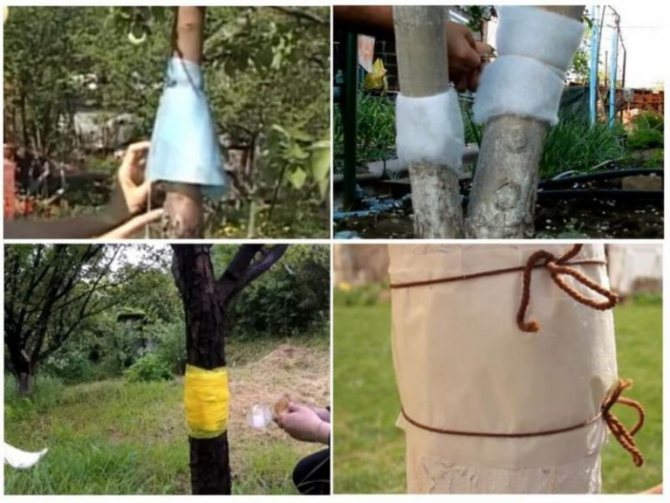

The tree protection trapping belt is great for eliminating the problem of insect invasion. Illustration for this article is used under a standard license.
Types of trapping belts and their features
In the arsenal of this type of device, there are several model options. Depending on the circumstances, in practice, you can use several types of belts - use them alternately or in combination, installing several pieces on one tree.Three main types of structures will help protect the orchard from pests:
- Dry hunting belt;
- Sticky belt;
- Poisonous hunting belt.
Dry trapping belt
There are quite a few adherents of just such a dry hunting belt. In their opinion, the design is great for pets. But they use only one of the options - a "clean" belt, without the use of chemicals.
The design of such a belt resembles a funnel attached to the trunk of a tree and the neck facing downward. It is made of polyethylene or cardboard. The upper narrowed one is often attached to the trunk, and the lower wide one is at a distance of 5-7 cm from the trunk.
For more effective pest control, it is recommended to attach a special adhesive tape or simple adhesive tape with the sticky side out and then, the likelihood that the pest will simply stick to the glue increases many times over.
Transparent film or plastic from a plastic bottle, through which the number of victims trapped in the trap can be observed, will help to trace the effectiveness of the trap.
Sticky Trapping Belt
The use of sticky tape for catching insects is excellent, both as separate catching belts and in combination with other means. The belt is effective for catching creeping pests and all kinds of bugs and ants. In the retail network, you can find a product that is ready to use, or you can make it yourself. It can be mounted both on the central trunk and on individual branches, thus creating an echeloned defense of the tree.


Sticky Trapping Belt
Poison Belts
For effective pest control, poisonous trapping belts are also used. There is an opinion that the use of poisons has a detrimental effect on the development of plants and that the active substance penetrates into the fruits through the bark of the tree. However, if we consider that the use of insecticides directly on leaves and fruits during the growth period in the form of aerosols and water dispersions is done more than once a year, then this method of control is quite justified. In the garden, two types of "poisonous" belts can be used - in the form of fabric impregnation and in the form of a liquid solution.
How a tree catcher works
The simplest trap is used as a barrier and mechanical trapping of garden parasites. It is made in the form of a wide strip (20 ... 30 cm). They use different materials: cardboard, rags, scrapped film and others. These devices effectively work against pests, in the life cycle of which there are movements down to the ground and back - from the ground to the crown. It:
- whiteflies, their pupae can develop only on the ground;
- weevils cannot fly and move only along the bark of a tree;
- caterpillars can crawl, only butterflies can fly. But in the absence of food they die;
- ticks are unable to overcome an obstacle on the trunk of a fruit tree (plum, apple or pear);
- aphids are carried by ants, which also cannot fly.
On the trapping belt there are sticky substances (glue or grease), insects stick to them. Even the simplest visors are an insurmountable obstacle. When using insecticides, trapped pests are killed.
Principles and rules for using traps
The effectiveness of trapping belts largely depends on the tactics used. Protecting your garden with only the installation of trapping belts is unlikely to work. It is also important to know how to use them correctly, how often to renew the sticky stripes and refresh the poison. In practical terms, it is recommended to follow these steps:
- The installation of traps is carried out at a height of 30-60 cm from the ground, but the installation site should be below the skeletal branches of the tree.
- Installation is carried out before budding on the tree;
- Fishing belts are installed on all fruit trees in the garden;
- Inspection is carried out whenever possible every day;
- Stone fruit trees are freed from their belts after harvest, and from apple trees, pears, and especially winter varieties, the belts remain on the trunks until the first frost and the beginning of leaf fall;
- When traps are installed, it is imperative to cut the grass under the trees.
What pests does such a device help against?
Such mechanical traps are used against any caterpillar, especially all
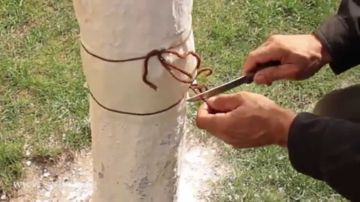

varieties of moths, weevils, herbivorous mites, apple flower beetles, ants (red and black garden), whiteflies, aphids.
In general, trapping belts collect and detain any insects that live on fruit trees.
Features of making trapping belts with your own hands
To protect the garden, there are various options for making trapping belts on your own. Some are disposable and used only for one season, while others can be made reusable and used for several years. A feature of such devices is that they, like other equipment, require care, otherwise they simply turn into a source of spread of infections and a place for laying insect eggs.
Dry belt manufacturing options
- At a height of 50-60 cm, a tape with a sticky layer is attached to the barrel, for this you can also use an ordinary wide adhesive tape wrapping the barrel with the clean side of the sticky layer outward;
- The neck and bottom of a plastic bottle are cut off. The resulting segment is cut to length so that it can be put on a tree trunk;
- The piece is put on the barrel slightly above the sticky layer and lowered so that the sticky layer is under the cap, but does not touch it.
- The upper part of the plastic is tied to the tree trunk with tape. The cut line is glued together with a separate segment.
The second version of the trap is made without wrapping the tree trunk with duct tape. You just put on the bottle and wrap it with tape or tape.
Making a sticky belt
The main damaging factor of the garden trapping sticky belt is a sticky composition of a substance that does not solidify for a long time. It can be resin, tar or bitumen mixture. Installation on a tree is usually done as follows:
- The trunk or branch is wrapped in cardboard or from a strip of thick paper 20-25 cm wide.
- Several turns of a bundle are wound over it, after 3-5 cm a belt is wound again from a bundle.
- Further, the harness belts and paper between them are abundantly smeared with a sticky composition.
- So that the composition does not heat up in the sun, it is closed from the sun's rays with a cardboard visor, like a dry fishing belt.
As a substance for the sticky layer, you can use ready-made mastics and sticky compounds - building mastic for waterproofing, bitumen mastic for linoleum or automotive lubricant.
You can also make an adhesive composition yourself. To do this you need:
- Pine resin - 10 parts;
- Rosin ordinary 1.2 parts by weight;
- Medical petroleum jelly 1.5 parts.
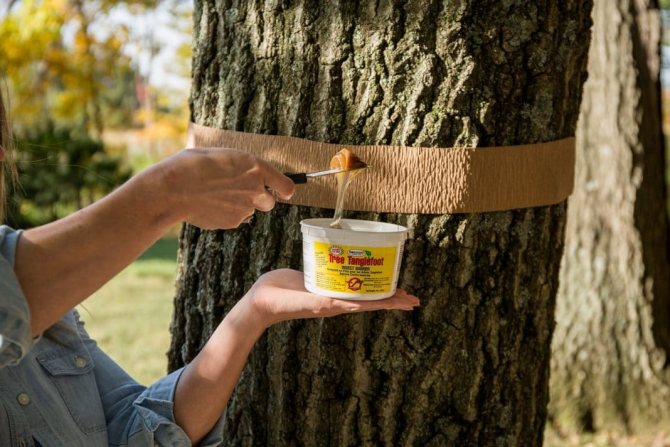

Installing a sticky belt with your own hands
After mixing all the parts, they are kneaded until a homogeneous mass is obtained.
The second recipe for Velcro is made from tar and butter. For this, 2 parts of tar and 1 part of burdock oil are taken. The mixture is stirred and boiled in a water bath for 5-6 hours. The resulting mixture should have the consistency of sour cream.
Ant Sticky Belt
Making such a trap requires some skill and accuracy. You will have to work with glue that does not dry out for a long time. Below you can find out how to make a trapping belt for this type of ants yourself:
- First, you need to cut a piece of craft paper that is 20 to 25 cm wide - it should cover the tree trunk in a circle.
- Then cover one side of the trap with special non-drying glue, tar or resin.
- Attach the resulting fixture to the barrel with the glue side up.
- Cover up any possible “passages” both below and above the adhesive belt.
Benefit and harm
So, speaking about the benefits that they bring, it is worth noting that goose bumps eat pests, garden plants are of little interest to them, and they are also directly involved in aerating the soil. Now let's look at the main points of harm. When colonies grow, they are able to eat whatever is edible. They promote the growth of aphids as they are the source of the sugars they need for life. They damage the root system of plants.
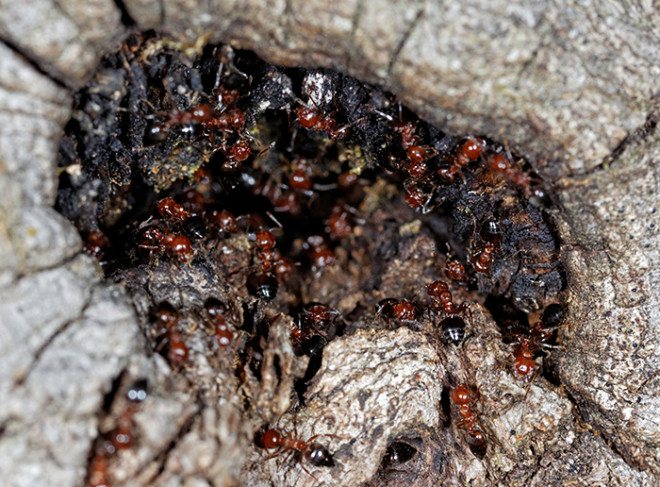

As you can see, the harm done overrides all the good that these insects can bring, so the fight should be taken off without fail. It is also worth knowing about one more thing, red goose bumps are poisonous insects that can destroy poultry eggs and even kill a chicken.
In fact, ants are not at all kind insects and they can hardly be called friendly and peaceful. They occupy the top positions in the food chain, and all for the reason that there are practically no natural enemies in nature.
They can be safely attributed to the polyphagous predators, since they easily eat all living things that come their way. One feature that prevents them from being classified as omnivorous insects is that their body is not able to digest cellulose, which is both positive and negative for people.
As already mentioned, they have no natural enemies, but at the sight of a ladybug, panic begins in the colony. All for the reason that these bugs, just like the creeps loving aphids, in this case it is absolutely useless to use your poison, since it does not work on ladybirds. The only way to eliminate the threat is to throw the ladybug off the branch, for this they gather in a flock and throw themselves on the bug.
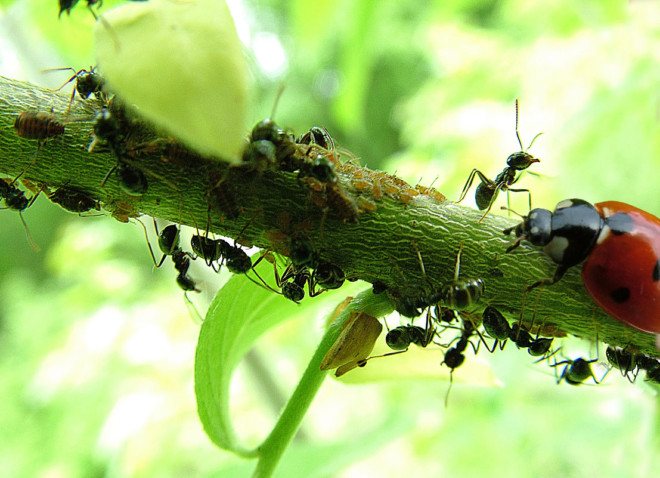

When there are a large number of individuals in a colony, a lot of food is also required, which means that they will get it from wherever they can. First of all, seedlings, young plants, root systems and, of course, the juicy fruits of trees, which contain sucrose, cherries, pears, apples, etc., suffer. One must remember about the harm that aphids bring, and goosebumps do everything to make it proliferate.
Natural enemies
If we talk about natural conditions, then in the forest hedgehogs, frogs, lizards and other animals are not averse to feasting on goosebumps. It will not be possible to breed such a zoo in vegetable gardens and orchards, and they will do more harm than good. Therefore, one has to rely on nature, and even luck, which will attract natural pest exterminators without prejudice to the garden.
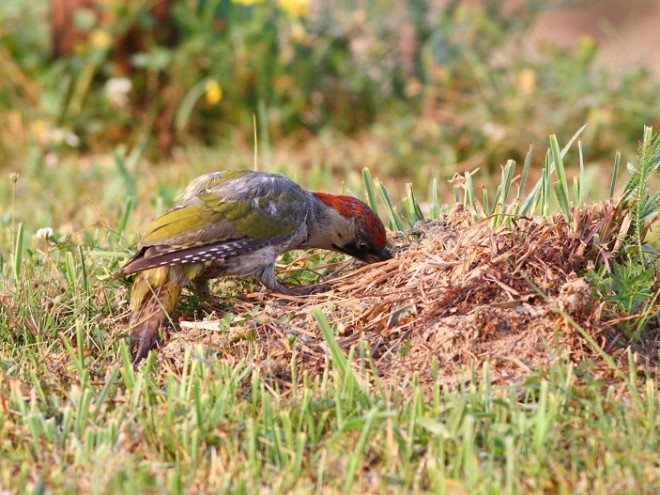

Birds are not averse to feasting on goosebumps, they especially love larvae and will not bypass the uterus. During the day, you can often see a picture when the bird is raking the soil and diligently looking for something, it is looking for these pests.
But you cannot count on their help, since with large accumulations of pests, more than one bird is needed, and the process of destroying anthills takes time, and we all know that birds do not like to be close to people, therefore, help from them will be minimal.


The ant lion can become an ideal savior, this beetle is the most dangerous for pests and is able to completely clear the area from goose bumps and other pests. If there is an opportunity to populate it on your site, this opportunity should not be missed.


